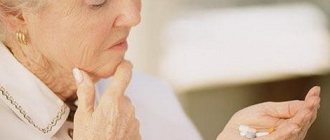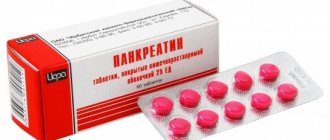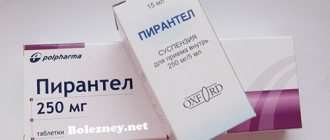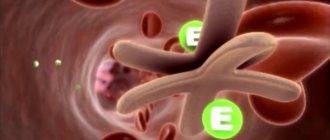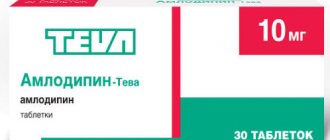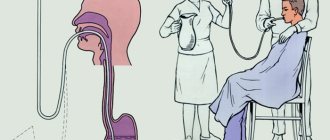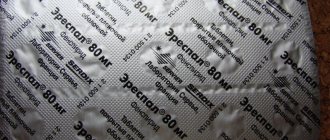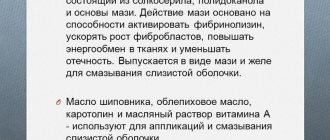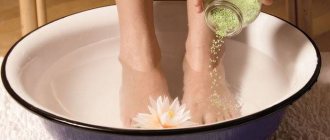Nizoral for fungus
According to the pharmacological classification, Nizoral belongs to antifungal agents that act on pathogens of skin and hair diseases. The medication has three release forms, the active ingredient in which is ketoconazole, a component that inhibits the growth and development of fungi. Nizoral is prescribed by a doctor, depending on the individual characteristics of the patient and the degree of the disease.
Composition and release form
Nizoral is presented in three release formats, similar in active substance. The full composition of each of them, according to the instructions, is presented in the table:
| Shape/Characteristics | Nizoral ointment | Shampoo | Pills |
| Ketoconazole concentration | 20 mg per 1 g | 200 mg per 1 piece. | |
| Auxiliary components | Propylene glycol, stearyl alcohol, cetyl alcohol, sorbitan stearate, polysorbate, isopropyl myristate, anhydrous sodium sulfite, purified water. | Sodium lauryl sulfate, disodium lauryl sulfosuccinate, coconut fatty acid diethanolamide, collagen hydrolysate, macrogol methyl dextrose dioleate, sodium chloride, hydrochloric acid, imidourea, flavor, sodium hydroxide, color, water. | Water, corn starch, cellulose, lactose, povidone, magnesium stearate, colloidal silica. |
| Description | White, homogeneous mass. | Red-orange liquid. | White, flat, round tablets. |
| Package | 15 g in aluminum tubes in cardboard boxes. | 25, 60 or 120 ml in polyethylene bottles with a screw cap. | 10 or 30 pieces in blisters. |
Pharmacodynamics and pharmacokinetics
Nizoral - instructions for use state that the active ingredient in the products under this name is the antimycotic ketoconazole, effective against many fungi, including Malassezia and Candida. This synthetic imidazole-dioxolane derivative kills dermatophytes and yeasts. Nizoral shampoo reduces itching, burning, flaking, and is effective for seborrheic dermatitis, dandruff, and pityriasis versicolor. When applied topically, the product does not penetrate the systemic bloodstream, but is detected in the plasma if applied to the entire body.
According to the instructions, Nizoral cream affects itching, eliminates dermatophyte and yeast infections, and the manifestation of symptoms decreases even before the first signs of recovery. When applied extensively to the skin, ketoconazole is detected in the blood plasma in small quantities. Repeated use of ointment in large quantities may cause a delay in the metabolism of other drugs.
When taking Nizoral tablets, synthesis slows down, the composition of fungal cell membranes changes, their growth stops, pathogenic microorganisms die. The bioavailability of ketoconazole reaches its maximum concentration in the blood 1-2 hours after administration with food. The substance is metabolized in the liver and excreted from the body in eight hours with urine and feces. For patients with liver and kidney diseases, no dose adjustment is required. For fungal meningitis, the drug is powerless, because the substance does not penetrate the blood-brain barrier well.
Indications for use
According to the instructions, general indications for the use of all forms of Nizoral are the following diseases:
- systemic fungal infections;
- paracoccidioidosis;
- histoplasmosis;
- coccidioidosis;
- blastomycosis;
- systemic mycosis.
Shampoo Nizoral
The medication in shampoo format is used to treat and prevent infections caused by pityriasis versicolor yeast, seborrheic dermatitis, and dandruff. Ketoconazole is prescribed to children from infancy and to adults. The instructions indicate that the shampoo is applied to the affected areas of the scalp for 3-5 minutes, then rinsed thoroughly with water.
- Sebazol - instructions for use, release form, indications, side effects, analogues and price
- Antifungal drugs are effective and inexpensive
- Mycozoral ointment - instructions for use in the treatment of fungus, composition, side effects, analogues and price
Cream Nizoral
Nizoral cream can eliminate dermatophyte skin infections. It treats athlete's foot, tinea versicolor, athlete's foot, candidiasis, pityriasis versicolor and seborrheic dermatitis. The cream is applied to the skin lesions once a day, covering the healthy area around it. It is used in the same way for the prevention of mycoses. For the treatment of seborrheic dermatitis, it is allowed to use the ointment more often - up to two times a day.
Nizoral tablets
For the treatment of fungal infections of the gastrointestinal tract (including the esophagus and intestines), chronic thrush when local remedies are ineffective, the treatment of mycoses of the feet and nails, and the prevention of lesions, Nizoral tablets are used. They act against fungus in advanced stages and can be used to prevent fungal infections after chemotherapy, treat skin and nails in old age or for problems with the immune system. The tablets have a high risk of hepatotoxicity, so they should be taken with caution.
How to use Nizoral tablets. Cost of the drug, analogues
Mycoses are a separate group of diseases that develop due to infection of the human body by a fungus.
The parasitic individual leaves spores on the surface of the skin and nails, causing a person to experience itching, burning, cracks and changes in the nail plates. Treatment of mycoses and onychomycosis takes a long time and continuously using local and systemic agents.
Nizoral tablets are suitable for therapeutic and prophylactic purposes, as they have a wide spectrum of action.
Directions for use and dosage
Nizoral - instructions for its use indicate differences in the methods of administration and dosage of the drug depending on the format. The cream should be applied for 2-3 weeks for pityriasis versicolor and yeast infections, 2-4 weeks for athlete's foot, 3-4 weeks for tinea pedis and up to 1.5 months for athlete's foot. Maintenance ointment therapy lasts 2-4 weeks with application 1-2 times a week.
To treat pityriasis versicolor, the course lasts five days using shampoo daily, to eliminate seborrheic dermatitis - twice a week for 0.5-1 month. If the use is preventive in nature, to prevent pityriasis versicolor, the shampoo is applied once a day for three days (one-time course before summer), to prevent dandruff - weekly or once every two weeks.
The tablets are taken orally with meals. Adults are allowed one piece per day. If improvement does not occur, the dose of ketoconazole is doubled. For vaginal candidiasis, 400 mg of ketoconazole is prescribed once per day. Children over three years old weighing up to 30 kg are prescribed half a tablet once a day, over 30 kg - an adult dosage. Course of treatment: vaginal candidiasis - a week, cutaneous mycosis - a month, lichen versicolor - 10 days, cutaneous candidiasis - 2-3 weeks. Fungal hair infections can be treated for up to two months; for histoplasmosis, taking ketoconazole lasts up to six months.
- Climbazole - what is it: instructions for shampoo and cream
- The best ointments for nail fungus on the toes and hands
- Effective fungal tablets: inexpensive means to treat infection
Contraindications
Nizoral products for external use have virtually no contraindications. As a result of use, an allergic reaction may occur. In this regard, shampoo and cream are not suitable if there are wounds or ulcers on the skin.
As for the tablets, they should not be used by nursing, pregnant women, or women over 50 years of age. Particular caution should be exercised by people with hormonal imbalances, liver and kidney diseases. The drug is contraindicated in case of hypersensitivity to its components.
special instructions
The instructions for use of Nizoral contain a paragraph with special instructions:
- Avoid getting shampoo into your eyes. If this happens, rinse them with water.
- If taking the medication coincides with treatment with corticosteroids, steroid therapy should be discontinued gradually over 2-3 weeks.
- Ketoconazole when applied topically does not affect the speed of psychomotor reactions.
- Do not throw the expired drug into the street or allow it to enter wastewater.
- The cream is not used in ophthalmology.
- Acidic drinks increase the absorption of ketoconazole due to the level of acidity.
Shampoo analogues
Due to the high cost (from 650 rubles for 60 ml), you have to look for analogues of Nizoral shampoo that are cheaper than the main product. They have the same effect and allow you to save on treatment. Today the following products have found their use: “Dermazol”, “Perhotal”, “Kenazol”, “Orazol” and “Ebersepi”.
Dermazol helps treat and protect against hair and scalp damage. It copes quite well with fungal infections. The product is used like a regular shampoo, but you will have to leave it on your hair for a while (before rinsing). Treatment of seborrheic dermatitis will last 1 month, pityriasis versicolor - several days.
Kenazol is produced in Jordan and has no side effects. It perfectly eliminates any damage to the skin on the head (including fungal ones). When using, be careful not to get the product into your eyes.
"Orazol" is an inexpensive analogue of "Nizoral" shampoo. It copes with various skin pathologies associated with the appearance of yeast-like fungi. For seborrhea, it will have to be used for 1 month, for lichen - 5 days. Unpleasant effects may occur: dry, oily hair, minor skin irritations.
“Perhotal” is a safe remedy that gets rid of fungi on the skin. It can be used by pregnant and lactating women.
"Ebersepi" is a Greek antifungal shampoo. It copes with various lesions of the hair and scalp caused by the Malassezia fungus.
In childhood
Nizoral shampoo can be used by children of any age, starting from infancy, but after consultation with a pediatrician. Other forms of release are contraindicated for children under three years of age due to the risk of developing hepatotoxicity. If tablets are prescribed, but the baby weighs less than 15 kg, it is better to stop taking it, because there is no data on the safety of using the medication in children with this body weight.
Release form and composition of Nizoral
Nizoral is available in the form of tablets, cream, shampoo and suppositories. The active substance in all drugs is ketoconazole. This component affects systemic and superficial mycoses.
shampoo is used to treat dandruff caused by the activation of fungi of the genus Pityrosporum ovale. The tablets are effective in treating onychomycosis and mycosis, just like the cream. Suppositories are used to treat vaginal candidiasis (thrush).
Composition of anti-fungal tablets:
- ketoconazole (1 tablet - 200 mg);
- corn starch;
- microcrystalline cellulose;
- water;
- lactose monohydrate.
The tablets also contain polyvidone and silicon dioxide. The composition of the cream includes propylene glycol (base), alcohol (stearyl and cetyl), sorbinate stearate (to create texture), sodium sulfite and polysorbate.
Nizoral in cream form. The drug contains ketoconazole
Drug interactions
The instructions for use indicate drug interactions between Nizoral and other medications: antacids are taken two hours after taking the drug; it is prescribed with caution when taking hepatotoxic drugs. You cannot combine the drug with:
- Astemizole;
- Bepridil;
- Halofantrine;
- Dihydroergotamine;
- Disopyramide;
- Domperidone;
- Dofetilide;
- Irinotecan;
- Levomethadyl;
- Lovastatin;
- Methylergometrine;
- Midazolam;
- Misoelastin;
- Nisolpidine;
- Pimozide;
- Sertindole;
- Simvastatin;
- Terfenadine;
- Triazolam;
- Quinidine;
- Cisapride;
- Everolimus;
- Eplerenone;
- Ergometrine;
- Ergotamine.
pharmachologic effect
Nizoral has a fungicidal effect, that is, over time, the medication completely suppresses the activity of pathogenic microorganisms. The drug also has a fungistatic effect, due to which the growth of fungi slows down significantly in the first days of using the drug. The antifungal component ketoconazole has a destructive effect on the cell membrane of pathogenic microorganisms.
Nizoral cream penetrates deeply into the nail and gradually destroys fungi. The medicine also relieves the main symptoms of onychomycosis: itching, burning. The drug fights yellowness of the nail and eliminates unpleasant odor. Nizoral tablets have a similar but slower effect.
Side effects and overdose
With an oral overdose of drugs, an increase in side symptoms is observed. Treatment is symptomatic therapy; inducing vomiting and gastric lavage are prohibited. According to the instructions and reviews, rare side effects with an undesirable reaction are the following factors:
- eye irritation, lacrimation;
- skin reactions: erythema, local skin irritation, hypersensitivity, itching, pustules, urticaria;
- folliculitis;
- taste disorder syndrome;
- acne, alopecia, contact dermatitis, dry skin, disruption of hair texture and color;
- burning, flaking of the scalp;
- increased intracranial pressure, nausea, vomiting, bowel dysfunction, risk of bleeding;
- development of drug-induced hepatitis, sleep problems, menstrual irregularities;
- photosensitivity, paresthesia, drop in testosterone hormone levels in men;
- decreased platelet count.
Indications for use of Nizoral
The antifungal drug Nizoral is used to treat:
- mycosis and onychomycosis;
- candidiasis (skin, vaginal and throat);
- lichen (pityriasis versicolor, multicolored);
- epidermophyton (disease of the skin and nails caused by epidermophyton fungi);
- seborrheic dermatosis.
The tablets are effective for the treatment of systemic fungal infections. They help get rid of blastomycosis, coccidioidosis, paracoccidioidosis and histoplasmosis. The tablets are not effective for treating fungal meningitis.
Nizoral is excellent for treating onychomycosis
Nizoral's analogs
Based on the active substance and the fungicidal effect, the following analogues of the drug, produced domestically and abroad, in similar release forms are distinguished:
- shampoos Sebozol, Mycozoral, Perhotal, Mikanisal;
- creams Dermazol, Mycozoral;
- tablets Dermazol, Mycozoral, Mycoket, Ketoconazole;
- Ebersept, Orazol, Kenazol.
Cream analogues
Nizoral in this form of release will be quite expensive, especially if it is necessary to treat a large area. Cheaper analogues:
- "Ketoconazole". It prevents fungi from developing and multiplying due to the fact that it affects their cell membranes.
- "Mycozoral". Copes well with dermatomycosis, seborrhea and athlete's foot;
- "Dermazol". Its composition is similar to other analogues, but costs about 100 rubles.
If a patient has hypersensitivity to ketoconazole, the doctor may prescribe other drugs:
- "Candide" and "Clotrimazole";
- Ecodax;
- "Clotrex";
- "Zalain."
According to reviews, analogues of Nizoral have the same effect as the original product. But it should be remembered that any medicine must be prescribed by a specialist. Otherwise, it may lead to undesirable consequences.
As users note, the Nizoral series really helps with problems associated with the scalp. Yes, it is not possible to completely cure seborrhea, dermatitis, and psoriasis, but the condition can be improved. The disadvantages include drying out the skin, the high price of Nizoral shampoos, creams and tablets, as well as analogues. Users are advised to purchase products only in pharmacies.
Nizoral price
The drug is sold online or in standard pharmacies. The cost depends on the release form and quantity/volume in the package. Approximate prices are listed below:
| Type of medicine | Price in online stores, rubles | Price in pharmacies, rubles |
| Cream 2% tube 15 ml | 497 | 510 |
| Shampoo 2% bottle 60 ml | 743 | 780 |
| Shampoo 2% bottle 120 ml | 999 | 1100 |
| Tablets 200 mg 30 pcs. Belgium | 1727 | 1800 |
Nizoral tablets: instructions for use
Nizoral tablets belong to the pharmacological group of drugs - antifungal drugs for systemic use. They are used for etiotropic therapy (treatment aimed at eliminating the impact of the cause of the disease) of infectious processes caused by fungi sensitive to the active substance of the drug.
Release form and composition
Nizoral tablets are white, round in shape with beveled edges and a scoring line. The main active ingredient of the drug is ketoconazole, its content in one tablet is 200 mg. The drug also contains auxiliary components, which include:
- Microcrystalline cellulose.
- Lactose monohydrate.
- Magnesium stearate.
- Corn starch.
- Povidone K90.
- Colloidal silicon dioxide.
- Purified water.
Nizoral tablets are packaged in blister packs of 10 pieces. A cardboard pack contains 1 or 3 blisters of tablets and instructions for use of the drug.
pharmachologic effect
The active ingredient of Nizoral ketoconazole tablets is a chemical derivative of imidazole. It inhibits the synthesis of ergosterol, which is necessary for normal synthesis of the fungal cell wall.
By reducing its concentration, ketoconazole has a fungicidal (leads to the death of fungal cells) and fungistatic (reduced growth activity and proliferation of fungi) effect.
The drug is active against yeast fungi (Candida, Malassezia, Torulopsis, Cryptococcus), dermatophytes, eumycetes (higher fungi) and dimorphic fungi. It has less activity against Sporothrix schenckii, Aspergillus spp., some Dermatiaceae, Mucor spp.
Analogues and cost
The cost of Nizoral in the form of ointment and shampoo ranges from 500 to 800 rubles. The price of the drug in tablet form starts from 800 rubles and varies depending on the specific place of purchase.
The drug has a number of analogues in group and pharmacological action:
- Ketoconazole;
- Dermazol;
- Mycozoral;
- Mikoket;
- Livorol;
- Sebozol;
- Mikanisal;
- Ketodin;
- Ketozoral;
- Zalain;
- Onabeth;
- Kandibene;
- Kanesten;
- Fungisan;
- Funginok;
- Dandruffed;
- Kenazol;
- Oronazole;
- Ebercept.
Most analogues have a more affordable price and are no less effective than Nizoral
How to use Nizoral cream for fungus
Nizoral cream is recommended for the treatment of a variety of fungal diseases that affect the skin.
The use of this drug should be under the supervision of a physician, who first carries out a series of diagnostic procedures to determine the causative agent of the disease.
Self-prescription of a drug does not always lead to a positive result and can aggravate the course of the disease.
Compound
The active substance in Nizoral cream is ketoconazole. The list of auxiliary components is more diverse:
- emulsifiers in the form of alcohol;
- propylene glycol;
- sorbitan stearate;
- palm and olive oil;
- Isopropyl Myristate;
- sodium sulfide;
- prepared water.
The drug is packaged in tubes with a capacity of 15 g each. It comes on sale in the form of a cream. Nizoral is not available as an ointment.
Pharmacology
The main action of Nizoral is antifungal. The medicine has a wide range of effects on various microorganisms. It is able to penetrate deep into the site of infection, which increases the effectiveness of the treatment. When using the product, a pronounced fungicidal and mycostatic effect is observed against the following types of fungus:
- trichophytons;
- Microsporum canis;
- epidemic phytons;
- many types of yeasts.
After using the drug, the appearance of the skin affected by mycotic infection almost immediately improves, itching and swelling disappear and the negative manifestations of the inflammatory process decrease.
Nizoral, when applied topically, is not absorbed into the blood and does not produce a systemic effect on the human body.
When is it recommended to use the drug?
Instructions for use of Nizoral indicate the following indications for its use:
- seborrheic dermatitis of varying severity;
- candidiasis developing on the surface of the skin;
- epidermophytosis, localized in the groin, in the area of the feet or hands;
- pityriasis versicolor;
- fungal infection of the skin on different parts of the body (including the nail plates).
Treatment regimens
In most situations, an antifungal cream will help, even if applied only once a day.
The duration of treatment is determined by the type of disease diagnosed and the severity of the patient's condition. A positive result from the therapy used can appear quite quickly - within a few days. But this does not mean that you can stop treatment. Nizoral should be used for the entire period prescribed by the instructions.
Dermatomycoses
If a fungal infection develops on the surface of the skin, Nizoral should be used once a day. It is applied to the entire problem area and adjacent areas. During treatment, you must carefully adhere to the rules of personal hygiene and prevent recurrence of the infection.
The minimum possible duration of therapy is 15 days. In more severe cases, its duration can increase to a month. If after completing the course there is no recovery, you should consult a doctor for additional examination to clarify the diagnosis.
Onychomycosis
To get rid of onychomycosis, Nizoral is applied to the dry surface of the nail and to the periungual fold. The cream is thoroughly rubbed into the tissues affected by the fungus once a day. In especially severe cases, it is allowed to use the drug more often - every 12 hours.
To treat onychomycosis, doctors often additionally prescribe antifungal medications in the form of tablets.
The duration of therapy is determined individually. The cream is usually recommended to be used until a healthy nail grows completely.
Use during pregnancy and lactation
There is no evidence that the drug, when used externally, can be dangerous for women expecting the birth of a child or breastfeeding. But before use you need to consult your doctor.
Adverse reactions
When applying an antifungal cream, irritation or a burning sensation may occur.
Sometimes allergic reactions develop in the form of contact dermatitis.
Analogs
In the pharmacy you can find many analogues of Nizoral, which have an optimal cost and are not inferior in effectiveness:
- Dermazol is an antifungal cream with the same active ingredient - ketoconazole.
- Mycozoral. The drug with ketoconazole has a similar scope of application and has a low price.
- Sebozol is analogous in composition and action.
- Ketozoral. Topical cream with ketoconazole, which produces a pronounced antifungal effect.
Price for Nizoral shampoo
If it is not possible to purchase the drug at a real pharmacy kiosk, the purchase can be made virtually - order from the Nizoral online store with home delivery, pick up or receive the product by mail. Many pharmacies offer their customers discounts when ordering over a certain amount, reasonable prices and free delivery in St. Petersburg and Moscow. To find out how much Nizoral costs and find the drug on sale, you can use a search in pharmacy catalogs.
Pharmacies in Moscow offer to purchase Nizoral shampoo at the following prices:
| Name of the drug (release form - shampoo) | Volume | Prices (rubles) |
| Nizoral 2% | 60 ml | From 603 to 764 |
| Nizoral 2% | 120 ml | From 819 to 1096 |
| Nizoral Prophylactic (shampoo-conditioner) | 250 ml | From 399 to 508 |
Additional instructions and analogues
The drug reacts to interactions with drugs such as:
- Simultaneous combination with Ritanovir reduces the amount of the active substance of the drug;
- The use of drugs that reduce acidity impairs the absorption of Ketoconazole;
- HMG-CoA reductase blockers;
- Ergot herb alkaloids;
- Indirect anticoagulants;
- Antitumor drugs (Busulfan, Docetaxel);
- Glucocorticosteroid substances (Dexamethasone, Methylprednisolone).
Nizoral is not used in ophthalmology, and if the shampoo gets into your eyes, you should rinse them with the required amount of running water. The drug has high hypotoxic properties, so the use of the drug should be started only if there are clear and urgent indications!
The average price for a medicine is 770–800 rubles and is quite high for this category of medicines. Therefore, you can choose cheaper analogues of Nizoral described in the list below:
- Bifonazole. An inexpensive analogue of Nizoral presented as a cream, solution, powder. The active substance provides an antifungal effect. The medicine is intended for the treatment of pityriasis versicolor, candidiasis, diaper rash between the toes, and foot hyperhidrosis. The drug is not recommended if allergic reactions occur. Price 200–250 rubles.
- Clotrimazole. The cheapest substitute for the original with antimycotic action. The drug is presented in the form of gel, cream, ointment, solution, tablets and suppositories. Indications for use: treatment of fungal infections of various pathologies, lichen, erythrasma, thrush. The medicine is prohibited in case of individual intolerance. Price 80–100 rubles.
- Mykosalon. An effective analogue of Nizoral in the form of an ointment. The combination of the main components Mazipredone and Miconazole has an antibacterial and anti-inflammatory effect. The area of application is the treatment of dermatomycosis, candidiasis, lichen, erythrasma. The drug should be avoided in case of allergic manifestations. Price 300–320 rubles.
Interaction with other drugs
“Ketoconazole” is a drug that is often prescribed as part of a comprehensive treatment. For this reason, it is necessary to first familiarize yourself with the peculiarities of the interaction of the composition with other medications.
It is strictly not recommended to take the drug with medications such as:
- pimozide;
- cisapride;
- astemizole;
- quinidine;
- triazolam;
- lovastatin;
- terfenadine;
- simvastatin;
- astemizole;
- midazolam
The effect of ketoconazole is enhanced in the presence of ritonavir, so the dosage of the antimicrobial agent is reduced.
The activity of ketoconazole is enhanced by interaction with the following components:
- phenytoin;
- carbamazepine;
- rifabutin;
- isoniazid;
- rifampicin.
A change in the metabolism of the drug occurs in combination with medications that are responsible for changing the acidity of the stomach.
In the presence of ketoconazole, the effect of some drugs is prolonged or enhanced. Among them:
- anticoagulants intended for oral administration;
- HIV protease inhibitors (including indinavir and saquinavir);
- cyclosporine;
- medications with antitumor properties (pink periwinkle alkaloids, docetaxel);
- calcium channel blockers;
- rifabutin;
- digoxin;
- alprazolam;
- buspirone;
- sildenafil;
- methylprednisolone;
- carbamazepine;
- midazolam
In addition, there are several recommendations for admission.
- Amphotericin B weakens its effect.
- The effect of adrenal stimulation is reduced by the combined use of corticotropin and ketoconazole.
- The toxicity of phenytoin increases.
- When using contraceptives with low hormone levels, the risk of bleeding increases.
Reviews
Nizoral medicated shampoo helped me get rid of dandruff that I always had. Many other remedies brought results, but not long-lasting. Now they will use it for prevention.
Nizoral shampoo turned out to be quite effective: hair began to look neat without dandruff. After the procedures there are no unpleasant sensations. I want to continue using it.
My scalp was very flaky. Many remedies gave a short-term effect. On the Internet I found many excellent reviews about Nizoral shampoo, which can also eliminate dandruff. I started using it according to the instructions, and soon the first results appeared.
Pharmacy shampoo Nizoral solved my dandruff problem. It is enough to use it regularly. I advise anyone who has a similar problem to use it.
Overdose
With proper use of external medications, overdose is impossible. Due to the low absorption of the substance, it is unlikely even with frequent application of the cream to large areas of the dermis. If you accidentally swallow the cream or shampoo, you should consult a doctor. It is forbidden to induce vomiting in order to eliminate the remaining drug from the stomach - this increases the risk of suffocation.
There is a risk of overdose when taking pills. It is especially high in the case of self-medication. The accumulation of the drug is manifested:
- nausea;
- cramps in the stomach;
- disturbance of consciousness.
Ketoconazole does not have an antidote. To correct the patient’s condition, the tablets are discontinued and symptomatic treatment is carried out in a hospital setting.
Adverse reactions
The risk of side effects is low. Persons with individual sensitivity to the components may exhibit signs of allergy:
- redness,
- rash, acne, urticaria,
- skin erythema,
- pustules, folliculitis,
- increased itching, burning, tingling,
- changes in structure, severe hair loss,
- eye irritation,
- swelling of the tongue, pharynx, lips,
- dizziness,
- difficulty breathing.
The above phenomena do not pose a danger and disappear after stopping use of the drug.
To check the individual reaction of the body before use, you need to drip shampoo on your wrist. Evaluate the result in a few minutes.
The medicine does not affect the ability to drive a car or perform work of increased complexity.
How to take the pills
Nizoral tablets and analogues usually help against fungus on the skin and in the gastrointestinal tract, if taken one piece once a day. In the absence of positive dynamics, the dosage is increased to two tablets per day.
For the treatment of vaginal candidiasis, the drug is prescribed once a day, 2 pieces. If it is to be taken by a child, then it is necessary to take into account his weight. Children weighing from 15 to 30 kg should drink half a tablet. For large weight indicators, an adult dosage is prescribed. The duration of treatment can only be determined by a doctor, since it depends on the severity of the disease and the patient’s health condition.
Active substance
The active component of all Nizoral drugs is ketoconazole. A substance with a broad-spectrum fungicidal (destroys) and fungistatic (inhibits reproduction) effect. Refers to imidazoledioxolane derivatives. It acts by disrupting the lipid composition of membranes. The drug stops the production of ergosterol by fungal cells. Without this component, the existence of some types of fungi is impossible; resistant microorganisms stop reproducing. The substance is active against:
- dermatophytes (pathogens of trichophytosis, epidermophytosis, microsporia);
- yeast-like microbes (phytyrosporum and candidobacteria);
- phycomycetes;
- higher mushrooms;
- dimorphic fungi.
The advantage of ketoconazole is its low ability to penetrate the dermis. The skin of an adult does not allow substance molecules to pass through. In newborns, the compound was detected in the blood only when large areas of the body were treated (about 40%). In tablet form, ketoconazole quickly penetrates the systemic bloodstream, as it is absorbed in the acidic environment of the stomach. The drug has maximum bioavailability when taken orally with food.
Suppositories for intestinal candidiasis
Suppositories for intestinal candidiasis are drugs that help eliminate intestinal infection caused by harmful microorganisms.
Intestinal infections cause severe pain and discomfort. Intestinal candidiasis is a type of dysbiosis that is caused by opportunistic fungi. In every person, these mushrooms are present in the intestines, but in small quantities, without causing harm to the body. Healthy intestinal microflora independently produces substances that prevent the proliferation of fungi and have antibacterial activity. Intestinal candidiasis occurs when the immune system is unable to prevent the proliferation of harmful microorganisms or there are too many of them. The causative agents of candidiasis are the yeast-like fungi Candida, of which there are more than 170 species. Fungi are everywhere: in fruits, vegetables, household utensils, soil and of course in the human body.
- To treat intestinal candidiasis, it is necessary to use medications that are not absorbed from the intestinal cavity. The ideal option is rectal and vaginal suppositories. A doctor should prescribe suppositories for intestinal candidiasis, indicating the dosage and duration of use. In addition, the doctor will be able to monitor the effectiveness of treatment, since some patients experience allergic and dyspeptic disorders. Intestinal candidiasis is treated with the following suppositories: Pimafucin, Nystatin and antifungal antibiotics in tablets.
- Pimafucin is an effective antifungal drug that is approved for use during pregnancy and lactation. Treatment of intestinal candidiasis is long-term and can take more than one year of therapy.
- The use of suppositories for candidiasis helps prevent the development of a generalized form of the disease. The main criterion for cure is a negative culture test for fungi and, of course, the absence of symptoms of the disease. In some cases, to achieve a lasting therapeutic effect, antimycotic treatment is carried out.
In addition to the main therapy, the patient is given additional symptomatic treatment. For this purpose, antispasmodics, laxatives, absorbents, drugs to increase the protective properties of the immune system, and multivitamins are used. Prevention of intestinal candidiasis is mandatory. Prevention is the complete exclusion of factors that provoke the development of candidiasis. Do not forget about timely visits to doctors at the first symptoms of the disease. It is mandatory to follow a diet, that is, a balanced diet, which will prevent the occurrence of intestinal candidiasis.
Price and reviews
The average cost of a bottle is 60 ml. varies within 700 rubles. Product with a volume of 120 ml. will cost more, approximately 900-1000 rubles. In this case, the components will be the same, and the selected bottle size will directly depend on the buyer’s wishes regarding the duration of use.
Reviews about the use of Nizoral shampoo are predominantly positive, and this is due to the impeccable effectiveness of the drug. What do ordinary buyers say regarding the nuances of using the product:
- Maria, 34 years old, Orel: “My son developed seborrheic dermatitis at the age of 9. To be honest, I’m always afraid to use medications and give them to my child, but everything turned out okay. We bought a small bottle of Nizoral and the alarming symptoms disappeared within a week. Now I recommend this drug to everyone.”
- Kirill, 29 years old, Tomsk: “I have been suffering from dandruff for as long as I can remember, and not a single cosmetic shampoo that is sold in supermarkets has helped me. As a result, I got rid of dandruff with the help of Nizoral, and now I use the product as a preventative measure.”
- Zhanna, 24 years old, Kazan: “I have had pityriasis versicolor twice already, and in both cases I was treated with Nizoral.” The only drawback for me was the high cost of the shampoo, but there are no complaints about the effectiveness of the drug.”
Different volume
Nizoral should be used as directed by your doctor or as recommended in the instructions. In this case, you will be able to quickly get rid of dermatological problems without encountering side effects.
Analogs
There are medications that are similar in composition and therapeutic effects. Among them, cheap tablets Ketoconazole, Mycozoral, Funginok should be highlighted.
Ketoconazole
The drug Ketoconazole is administered orally; adults are prescribed one capsule once a day. If the therapeutic effect is insufficient, the dosage is doubled. The product is taken with food.
The duration of therapy is determined by the type of fungus. With dermatomycosis, recovery should take 4 weeks, with pityriasis versicolor - 10 days, if the fungus affects the nail, treatment lasts at least six months. For thrush a course of 2-3 weeks is prescribed, for systemic mycosis - 5 days. Children over 12 years of age should be given one capsule once a day.
Important addition: Clotrimazole spray: how to use the drug for fungus?
Contraindications to Ketoconazole include impaired liver function, kidney function, children under 12 years of age, pregnancy, and breastfeeding. Cases of overdose have not been described, increased adverse reactions are possible, no specific therapy is provided.
Mycozoral
Mycozoral tablets are taken with food, for lichen versicolor, dermatomycosis, the recommended dosage is 200-400 mg per day, the course is from 1 to 8 weeks. The remedy against onychomycosis is taken from 3 months until complete recovery and replacement of the nail plate.
Treatment of systemic mycoses is carried out for two weeks, 200-400 mg of Mycozoral is taken per day. Then drink 200 mg of the substance for 4-6 weeks. For systemic mycoses, the maximum daily dosage for an adult is 400 mg three times a day. Treatment lasts from six months to a year.
Provided that all instructions are followed, an overdose of the medication is excluded. But if taken in excess, the patient needs to rinse the stomach to evacuate the drug from the digestive system. To prevent negative consequences, the patient is provided with:
- drinking plenty of water;
- taking sorbents;
- bed rest.
Additionally, there is a need for symptomatic therapy. Severe cases of overdose require a person to stay in a hospital.
Features of analogues
One or another antifungal analogue of Nizoral should be used only as prescribed by a doctor. After all, only an experienced specialist can determine which remedy will be most effective in the fight against your illness.
One cannot ignore the fact that, despite the similar properties of all of the listed remedies, each of them has its own contraindications and side effects. That is why, before using shampoo, ointment, vaginal suppositories and Nizoral tablets, as well as their analogues, you should definitely read the attached instructions. After all, this is the only way you can completely get rid of the existing disease without causing any harm to your health.
Onychomycosis or nail fungus is very easy to contract. The infection can be caught through contact with an infected person, when sharing towels, slippers, through manicure accessories, or while visiting a swimming pool, gym, bathhouse and other places where conditions are favorable for the growth of the fungus. People with weakened immune systems, bad habits, and chronic diseases are especially susceptible to fungal diseases. Fungal infections of the nails are the most difficult to treat and require patience from the patient, since the course of treatment is long and cannot be interrupted. Nizoral for nail fungus is a popular remedy that helps fight fungal infections. It is used not only for medicinal but also for preventive purposes. This is facilitated by the variety of drug release forms. Let's learn more about the principle of action, composition and methods of use of antifungal medication.
Nizoral is a synthetically produced antifungal drug with a broad spectrum of action. The effectiveness of the product is due to the active substance - ketoconazole, which was first synthesized in the Belgian laboratory "Janssen Pharmaceuticals" in 1967. Since then, medicines based on it have been used to treat fungal infections, since they work to stop the further proliferation of pathogenic microflora and its further destruction.
Ketoconazole exhibits fungicidal and fungistatic effects against a number of dimorphic, yeast fungi and dermatophytes, pathogens of pityriasis versicolor, staphylococcal, streptococcal microflora. The principle of its operation is to block the synthesis of ergosterol in fungal cells, as a result of which the balance of substances vital for the fungus is disrupted and it dies.
When Nizoral is used externally, the active substance quickly penetrates into the depths of the affected tissues and has a therapeutic effect from the inside, at the cellular level. In cases where treatment is started in a timely manner, at the initial stage, the use of external agents (in the form of ointments, creams) is quite sufficient. But if more than 30% of the surface of the nail is affected by the fungus, complex treatment is necessary, which in addition to ointments. Nizoral should be prescribed by a dermatologist. Depending on the results of the laboratory test, he will select the desired form of the drug, which will provide the maximum therapeutic effect.
Composition and release form
There are three forms of release of the drug:
- Tablets (200 mg);
- Cream (ointment) 2% for external use;
- Shampoo 2%
Pills
Nizoral - round, flat, with a beveled edge, white. 1 tablet contains 200 mg of ketoconazole + excipients. The drug is sold in blisters, each of which contains 10 pcs. tablets. There are one or three blisters in a cardboard box.
Cream (ointment)
is a homogeneous white mass, 1 g of the drug contains 20 mg of ketoconazole + auxiliary base. The drug is produced in aluminum tubes of 15 g.
looks like a transparent liquid of red-orange color. 20 mg of active substance + auxiliary components are dissolved in 1 g of shampoo. Antifungal shampoo is produced in polyethylene bottles with a screw cap of 25 ml and 60 ml.
When is Nizoral prescribed?
Indications for the use of Nizoral are the following conditions:
used for the treatment and prevention of fungal infections caused by pathogens sensitive to the active substance of the drug. These include:
- Fungal infections of the skin, nails and hair;
- Chronic candidiasis;
- Fungal infections of the mucous membrane of the gastrointestinal tract;
- As a prophylactic agent to prevent the development of fungal infections in persons with reduced immunity (caused, among other things, by taking chemotherapy drugs).
Cream Nizoral
prescribed for the following pathological conditions:
- Onychomycosis (nail fungus);
- Seborrhea of the scalp;
- Dermatomycosis of the skin, including those caused by fungi of the genus Candida;
- Pityriasis versicolor.
widely used to treat conditions such as:
- Seborrheic dermatitis (dandruff);
- Ringworm of the scalp.
The range of uses of Nizoral in medicine is extensive; it is used to treat a wide variety of fungal infections of the skin, hair, mucous membranes, and nails. The drug copes with mycoses even with extensive lesions, so it is prescribed for the treatment of systemic fungal infections (for example, coccidioidosis, histoplasmosis). Nizoral copes with fungal infections even when treatment with other antifungal agents does not work or the patient develops resistance to other antifungal drugs.
The method of use of the drug depends on the form of release, the severity of the lesions and the individual characteristics of the patient. The optimal treatment regimen and dosage of the drug is selected by a dermatologist.
According to the instructions, it must be taken with meals. The standard dosage for adult patients is 1 tablet (200 mg) per day. For extensive lesions of the nail plate, the doctor may double the dose of the drug. The course of therapy also depends on the severity of the lesion; usually, to treat nail fungus, tablets are taken for a long time, up to 6 months. It all depends on the growth rate of the nail plate. Treatment is considered complete when healthy nails grow back in place of the affected nails, and laboratory tests confirm the absence of fungal microflora in the nail plate.
Nizoral can be used to treat children. In this case, the dosage of the drug is calculated according to the child’s weight. With a body weight of 15 to 30 kg, the dose of the drug should be half that for adults, that is, the child needs to take 1/2 tablet of Nizoral per day.
Apply to affected areas of nails 1-2 times a day. In some cases, it is recommended to apply the drug to the nail in a thick layer, cover it with gauze, fix it with a bandage and leave the bandage overnight. The duration of treatment is also individual. Typically, therapy is continued for 6-9 months until a healthy nail grows. On the feet, the nail plates recover much more slowly; in this case, treatment can take up to 12 months.
Before using the cream, your feet should be thoroughly washed and dried. The affected areas of the nail must be cleaned with a file and wiped with a cotton swab soaked in an alcohol solution. After this, the surface of the nail is treated with cream, covering the surrounding skin. Apply the cream in a thin layer and wait a few minutes until it is completely absorbed.
not used to treat nail fungus. To treat seborrhea, it is used twice a week, to eliminate pityriasis versicolor - once every five days. For prophylactic purposes, it is used to prevent the appearance of dandruff. In this case, it is enough to wash your hair with shampoo once every 14 days.
At the same time, the instructions for the drug note that it is necessary to continue using Nizoral for a certain time, even after the symptoms of a fungal infection have completely disappeared. It is believed that recovery occurs when a laboratory examination of scrapings confirms the absence of fungal spores in the nail plate.
Important!
takes a long time (from 6 months to a year), and the course of therapy prescribed by the doctor cannot be interrupted. If you stop using an antifungal agent prematurely, then in most cases the infection returns in relapses. In addition, the fungus can develop resistance to the active substance (ketoconazole) and in the future it will be very difficult to cope with it.
Contraindications
Treatment with Nizoral is contraindicated in the following conditions:
- Individual intolerance to the components of the drug;
- Pregnancy and breastfeeding period;
- Acute or chronic liver dysfunction;
- Children's age (up to 3 years);
- Conditions associated with lactose intolerance.
Nizoral should not be used simultaneously with certain drugs with hepatotoxic effects and hormonal contraceptives. The drug in tablets is prescribed with extreme caution to persons suffering from alcohol dependence, since simultaneous use with ethanol can cause a dangerous reaction, accompanied by swelling, rash, nausea, redness of the skin, and surges in blood pressure.
Adverse reactions
Nizoral for external use in cream form causes virtually no side effects. In rare cases, allergic reactions may occur, characterized by skin manifestations such as irritation, itching, and burning sensation.
Taking Nizoral in tablets can lead to headaches, dizziness, sleep disturbances, and decreased blood pressure. From the gastrointestinal tract, dyspeptic symptoms are observed: nausea, vomiting, abdominal pain, diarrhea. Nosebleeds, menstrual irregularities, changes in blood counts, and erectile dysfunction are possible. On the part of the nervous system, taking pills may be accompanied by increased excitability, anxiety, or, conversely, unexplained weakness and fatigue.
The drug has many side effects, so self-medication should be excluded. Nizoral should be prescribed by a specialist, and the course of treatment should be carried out under his supervision. Long-term use of Nizoral requires regular monitoring of blood counts and the functioning of internal organs (liver and kidneys).
How much does the drug cost?
The price of Nizoral for nail fungus depends on the form of release, the manufacturer and mark-ups in the pharmacy chain. The drug does not belong to the group of drugs in the low price category. Here are the average prices for Nizoral in pharmacies:
- Nizoral cream 2% - from 640 rubles
- Nizoral tablets (30 pieces) – from 350 rubles.
Considering that the treatment of nail fungus is long-term, then Nizoral therapy will cost a decent amount. Therefore, many patients are interested in whether there are cheaper analogues that have identical antifungal effects?
Analogs
There are several popular analogues of Nizoral cream, which contain the same active substance and are used to treat nail fungus.
- Ketoconazole cream
is the cheapest analogue of Nizoral. The cost of the drug is only 60 rubles. The cream works effectively against superficial and systemic mycoses, quickly eliminates unpleasant symptoms and has a minimum of contraindications. - Cream Mycozoral
. The price of a package of the drug is about 200 rubles. Effectively copes with various forms of pathogens: yeast fungi, streptococci, staphylococci, dermatophytes. Quickly relieves inflammation, irritation, itching and other unpleasant symptoms of a fungal infection.
What is the remedy for?
First, let's find out what this shampoo is for. Its regular use will help cope with dandruff, itching, and flaking of the skin. The product also improves the overall condition of the hair - it looks healthier and more beautiful. The positive effect appears after a couple of weeks of constant use. The safe composition allows you to use the shampoo to wash children's hair. However, you need to be careful not to get it in your eyes. If the condition worsens or an allergy appears, then the product will have to be abandoned.
Rectal suppositories for candidiasis
Rectal suppositories for candidiasis can be used in cases of intestinal fungal disease or vaginal thrush. Rectal suppositories are suitable for pregnant women and for the treatment of thrush during menstruation. Let's look at several effective rectal suppositories for candidiasis.
Viferon
A complex drug with antiviral, antiproliferative and immunomodulatory effects. The drug is used to treat urogenital infections, infectious and inflammatory diseases, and intrauterine infections. Suppositories are effective in the treatment of candidiasis, bacterial vaginosis, herpes infection, chlamydia, ureplasmosis and a number of other viral lesions.
Rectal suppositories are used as prescribed by a doctor. As a rule, to treat candidiasis, patients are prescribed one suppository twice a day. The course of treatment takes from 5 to 14 days. In rare cases, Viferon causes allergic skin reactions that disappear 72 hours after discontinuation of the drug. Suppositories are contraindicated for use in case of individual intolerance to the active substance or components of the drug.
Viferon is allowed to be used for the treatment of candidiasis in pregnant women, but only from the 14th week, but there are no contraindications when using suppositories during lactation. To date, no cases of drug overdose have been recorded. Suppositories are sold from pharmacies without medical permission.
Nystatin
A drug effective against pathogenic fungi, especially Candida fungi. Despite its effectiveness, the drug is poorly absorbed, so the bulk of the suppository is excreted in the feces. Nystatin is used for the treatment and prevention of candidiasis of the mucous membranes of the vagina, mouth, skin, and internal organs. The drug is also effective in the prevention of candidiasis, especially with long-term use of antibiotics, tetracyclines and penicillin.
Rectal suppositories are used twice a day, inserted deep into the rectum. The duration of treatment takes from 10 to 14 days. Nystatin is low-toxic and therefore does not cause side effects. The drug is contraindicated for use in patients with individual sensitivity to the components of the drug, as this can cause nausea and vomiting, chills, and fever. Rectal suppositories for candidiasis are used only as prescribed by a doctor.
Pimafucin
An antifungal drug with the active ingredient natamycin (macrolide antidiotic). The drug has a wide spectrum of action and is sensitive to fungi of the genus Candida. Rectal suppositories are prescribed for the treatment of fungal diseases of the gastrointestinal tract, vaginal candidiasis, and vulvovaginal candidiasis. The drug is used in complex therapy of fungal diseases.
Suppositories are placed at night, usually one suppository per day. The duration of treatment is determined individually for each patient, but on average the course of treatment lasts from 3 to 6 days. After the main treatment course, a prophylactic course is carried out, 3-4 days after the disappearance of the symptoms of candidiasis. Side effects of the drug manifest themselves in the form of itching and allergic reactions. Suppositories are contraindicated for use in case of hypersensitivity to the components of Pimafucin. The drug is contraindicated for the treatment of candidiasis in pregnant women.
How to use suppositories to treat thrush
Below are step-by-step instructions for using intravaginal suppositories of any kind with general recommendations that can be easily followed at home, without seeking additional help in organizing the event from a gynecologist.
Preliminary preparation. Most often, a gynecologist recommends using intravaginal suppositories once a day before bed. In the evening, thoroughly rinse your genitals and hands under warm water, without using soap, gel or other additional cleaning products. Remove the suppository from the blister in advance and prepare a gasket;
Introduction of a candle. The candle is inserted into the polonium lying down. For convenient administration of the drug, lie on your side and pull your knees to your chest, carefully inserting the suppository into the vagina as deeply as possible
If an applicator is used for intravaginal administration of the product, it must be removed slowly and very carefully so that no elements of the device remain inside. After the main procedure, remain in the same position for up to 20 minutes - the drug should completely dissolve inside;
Post-processing activities
No matter how deep you insert the suppository, some of its liquid dissolved contents will still flow out. To eliminate discharge, use a pre-prepared pad;
Recommendations for sexual intercourse. During treatment for thrush using intravaginal suppositories, it is recommended to abstain from sexual intercourse so as not to upset the balance of microflora in the vagina. Moreover, it is advisable that your regular sexual partner also undergo a course of preventive treatment with appropriate antifungal drugs - often candidiasis is transmitted by direct contact, and a man can be a carrier of opportunistic yeast microflora even without external symptoms of candidiasis, which in the future can lead to relapse of thrush in representatives of the fair sex.
Nizoral, cream
Other dosage forms:
Instructions for use
- Pityrosporum orbiculare
- Cryptococcus spp.
- Trichophyton spp.
- Epidermophyton floccosum
- Microsporum spp.
- Candida spp.
Available in 15 g tubes.
Indications
- dermatomycosis and mycoses of the skin (3-4 weeks);
- pityriasis versicolor (2-3 weeks);
- athlete's foot inguinal (2-4 weeks);
- athlete's foot and hands (4-6 weeks);
- seborrhea (2-4 weeks).
Apply the cream once a day to clean and dry skin (2 times a day in case of severe seborrheic dermatitis). When applied externally, it has a good effect on the skin and destroys pathogenic fungi, and is practically not absorbed into the blood.
It is strongly recommended to observe good personal hygiene and disinfect shoes after successful treatment.
Compound
Ketoconazole 2%
Excipients: propylene glycol, water, cetyl alcohol, stearyl alcohol, sodium sulfite, sorbitan stearate, polysorbate 60, polysorbate 80, isopropyl myristate.
Side effects
Contact dermatitis is possible, less than 0.1% of cases;
Very rarely - urticaria, skin hypersensitivity, erythema, rash, itching - less than 0.01% of cases.
Pharmacological properties
After treating the skin, Nizoral quickly relieves itching, prevents tightness and other discomfort. The product has pronounced anti-inflammatory properties. It eliminates:
- peeling;
- sweating;
- hyperkeratosis;
- unpleasant smell.
All these effects are due to a slowdown in the growth and reproduction of the pathogen. An improvement in the condition is observed after the first application and until complete recovery. Due to its fungicidal properties, mycobacteria rarely become resistant to ketoconazole.
Prescriptions, contraindications, side effects
The medicine has the following indications for use::
- Lesions of the skin of a dermatophyte nature;
- Seborrheic dermatitis;
- Fungus of feet and hands;
- Candida skin manifestations;
- The phenomenon of dermatomycosis;
- Genital fungus;
- Pityriasis versicolor type.
When using shampoo:
- Preventive and therapeutic measures for seborrheic dermatitis, dandruff and lichen.
The use of tablets is effective in the following cases:
- Ringworm of different colors:
- Thrush of the vagina and oral cavity;
- The phenomenon of dermatophytosis;
- Candidiasis of the skin, mucous membranes;
- Fungal infections of a systemic nature (coccidioidosis, histoplasmosis, blastomycosis).
The drug has a number of contraindications when taking tablets:
- Liver dysfunction;
- Parallel use of substrates;
- Individual inability to digest lactose;
- Combination with Midozolam, Triazolam;
- Combined use with blockers Simvastin, Lovastin;
- Compound with ergot alkaloids;
- Age category up to 3 years;
- Allergy to the active substance;
- Disorders of the gastrointestinal tract;
- Concomitant use of alcohol
The use of shampoo should be avoided if you are hypersensitive to the drug.
Nizoral also has a number of side effects when using various forms of the drug:
- Allergic manifestations (itching, urticaria);
- Skin rashes, acne;
- Sleep disturbance, insomnia;
- Upset stomach, liver function;
- Changes in the amount of hormone production;
- Quincke's edema;
- Myalgic disorders;
- Swelling at the application site;
- Deterioration of general condition, fever.
If the above-described negative effects occur, you should stop using the medicine and seek the advice of your doctor!
Compound
It is possible and realistic to eliminate the dandruff problem!
Among the most effective products in the war for clean, beautiful hair is Nizoral shampoo. A significant advantage of this product is that it is aimed at combating the root cause of dermatitis, that is, infection.
Most drugs are limited to eliminating superficial symptoms, which helps for a while. Nizoral is an excellent antifungal medicine that can help you forget about dandruff forever.
The shampoo has 2 types of effects at once:
- Fungicidal (disinfectant, leading to the death of pathogenic bacteria);
- Fungistatic (delays the growth and prevents the reproduction of microorganisms, with dandruff - slows down the appearance of fungus).
Nizoral against dandruff
The shampoo contains the following substances:
- The main “combat” power of the anti-dandruff shampoo Nizoral is Ketaconozole (a derivative of imidazole). The chemical compound interferes with the biosynthesis of triglycerides, ergosterol and phospholipids, essential components of the fungal cell membrane. The drug contains an enzyme that destroys the infection by disrupting the integrity of the fungal membrane. As a consequence of this process, the supply of oxygen to the fungus is stopped, which leads to a stop in reproduction and death. The substance affects a wide range of microorganisms, including yeasts, dimorphic fungi, eumycetes, staphylococci and streptococci, and reduces the synthesis of androgens. The good news is that this chemical has a cumulative property, and therefore a long-term treatment effect. When used externally, ketaconazole does not enter the circulatory system; during experiments, it has never been detected in the blood after long-term external use.
- The next enzyme, quite rare for this product, is hydrochloric acid . Caution is necessary with this substance; in larger quantities than necessary, it can burn the skin. Hydrochloric acid does not have a targeted antifungal effect, but it has a thermal effect on the scalp, which can cause destruction of the microflora.
- Imidourea is an excipient responsible for enhancing the effect of the main treatment components. The compound leads to rapid absorption of ketaconazole into the surface layers of the skin and has a general antibacterial effect. Sometimes imidourea can cause an allergic reaction.
- Collagen hydrolyzate is a substance containing a high percentage of protein, deeply nourishes the skin and increases the content of amino acids in it. Its most important properties include: wound healing and nutrition. But in fact, collagen hydrolyzate performs a compensatory function, “smoothing out” the effects of other chemical compounds that have a more “harsh” effect. Considering that the shampoo is not on the hair for longer than a few minutes, it is difficult to say how effectively the skin is nourished with the help of collagen.
- Dyes and flavors are indispensable companions of all medicinal and cosmetic products. They do not affect the properties of the shampoo; they are of an aesthetic nature.
Nizoral shampoo will relieve the external manifestations of dermatitis - dandruff, annoying itching, it is effective against the disease - lichen versicolor.
